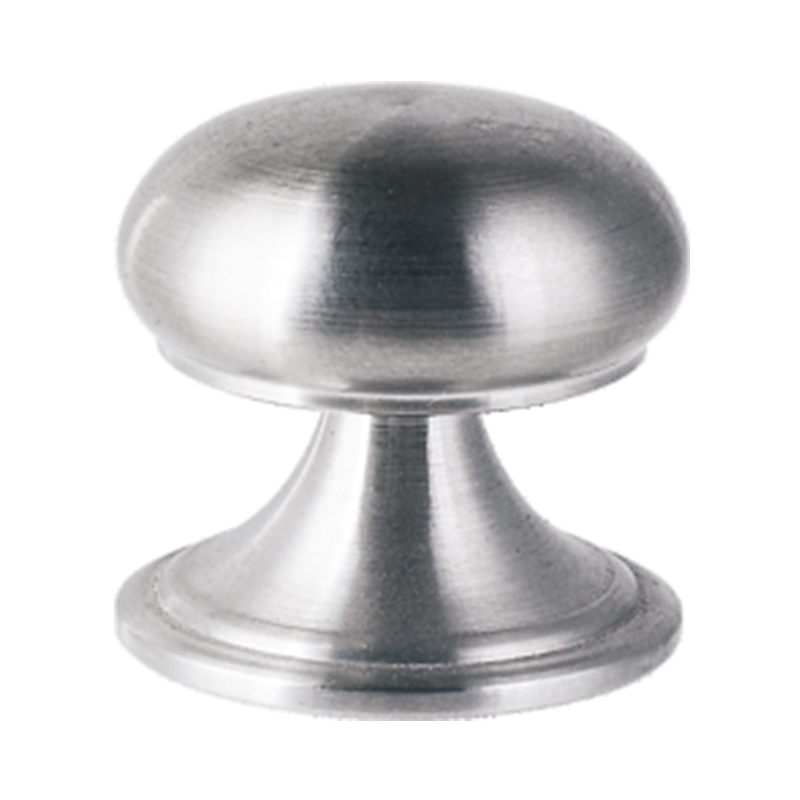How To Put Knobs on Cabinets?
Installing cabinet Knobs might seem simple, but achieving a professional and symmetrical result requires precision, the right tools, and an understanding of cabinetry materials. Whether you’re upgrading an existing kitchen or assembling new furniture, this guide explains the process step-by-step and explores the key factors to consider for a durable, attractive installation.

Table of Contents
Understanding the Purpose of Cabinet Knobs
Cabinet knobs are not only functional elements for opening drawers and doors—they also play a crucial role in the visual balance of cabinetry. The right knob placement enhances accessibility, prevents fingerprints on surfaces, and complements the overall design theme. Proper installation ensures long-term performance and prevents misalignment or cracking in the wood or panel.
Tools and Materials Required
Before starting, prepare the following:
Drill with variable speed control
Drill bits suitable for wood or metal (commonly 3/16" or 1/4")
Tape measure or ruler
Center punch or awl
Masking tape
Screwdriver
Level or alignment jig
Pencil for marking
Optional: hardware installation template for consistency
Having precise tools guarantees clean holes and symmetrical alignment, especially when installing multiple knobs on cabinet doors or drawers.
Step-by-Step Installation Process
Marking the Correct Position
Measure and mark where each knob will go. For cabinet doors, the general guideline is to position the knob 2.5–3 inches from the edge of the door, aligning it with the frame’s corner. On drawers, center the knob both horizontally and vertically unless the design requires multiple handles. Always double-check measurements before drilling to maintain visual consistency.
Using Templates or Jigs
To ensure repeatable accuracy, use an installation jig or template. These adjustable tools help align the knob position uniformly across all doors and drawers. A minor deviation of even 2 millimeters can be visually noticeable in a finished kitchen, making templates a valuable investment for bulk installations.
Drilling the Hole
Apply masking tape over the drilling area to prevent splintering, especially on painted or laminated surfaces. Start drilling slowly with a small pilot hole, then switch to the final drill bit size. Ensure the hole is perpendicular to the surface—tilted holes cause uneven knob seating and premature loosening.
Inserting the Screw
Most cabinet knobs are attached with a single machine screw from the back of the panel. Insert the screw through the back and thread the knob onto it from the front. If the screw is too long, trim it with a hacksaw or add washers to achieve a snug fit. Over-tightening can damage the finish or strip the threading, so hand-tighten until firm but not forced.
Verifying Alignment
Once installed, close the doors and drawers to confirm visual alignment. The knobs should form a straight line along the cabinetry. Use a level or straight edge to confirm horizontal and vertical uniformity, adjusting slightly if needed.
Material and Surface Considerations
Solid Wood Cabinets
Wooden doors are generally forgiving but can crack if drilled too close to the edge. Always pre-drill pilot holes and avoid overtightening. A screw-in metal insert can improve durability in softwoods like pine.
MDF or Particle Board
These materials require extra care because they crumble easily. Use sharp drill bits and moderate pressure. Consider using knobs with larger bases to distribute stress evenly.
Metal or Glass-Front Doors
For metal cabinets, use high-speed steel or titanium drill bits. For glass doors, avoid drilling altogether—opt for surface-mounted knobs designed for glass panels with adhesive or clamping systems.
Style and Placement Guidelines
Vertical Doors
On tall cabinet doors, place the knob on the opposite side of the hinges for ergonomic access. For upper cabinets, align knobs on the bottom corner; for lower cabinets, position them near the top corner.
Horizontal Drawers
Single knobs should be centered. For wide drawers exceeding 24 inches, consider two knobs or handles spaced evenly to balance the pull force and visual weight.
Design Symmetry
Symmetry between upper and lower cabinets is essential for aesthetic harmony. Align knob centers along a consistent horizontal line throughout the installation area. Always step back and inspect alignment under lighting before final tightening.
Common Mistakes and How to Avoid Them
Incorrect Height or Alignment
Even minor inconsistencies are highly visible. Always measure from a fixed reference point such as the cabinet edge or floor, and use templates for repeat installations.
Overdrilling
Drilling through both sides of a thin panel can damage the front finish. Stop drilling as soon as the bit penetrates the surface.
Loose Knobs
Knobs that turn after installation usually result from insufficient tightening or screw slippage. Apply a drop of thread-Locking compound if necessary.
Cracked Surfaces
Wood splits when drilled without a pilot hole or if screws are over-tightened. Always pre-drill and insert screws slowly to maintain material integrity.
Professional Tips for a Perfect Finish
Always test your measurements on a scrap piece before drilling into cabinetry.
Match screw material to knob metal to prevent corrosion.
Clean hardware before installation to remove oil or residue from packaging.
For luxury finishes like brushed nickel or brass, wear gloves during installation to avoid fingerprints.
If knobs are part of a large renovation, label each door and drawer to ensure consistent positioning during reassembly.
Maintenance and Long-Term Care
Properly installed knobs can last for decades with minimal maintenance. Clean them regularly with mild soap and water, avoiding abrasive cleaners that can dull finishes. If knobs become loose over time, simply retighten the screws or replace worn washers. For metal hardware in humid environments, apply a light protective coating to prevent oxidation.
Conclusion
Installing knobs on cabinets is a combination of precision craftsmanship and aesthetic balance. With accurate measurement, careful drilling, and thoughtful placement, even simple cabinetry can achieve a refined, cohesive appearance. Whether for kitchens, bathrooms, or office furniture, well-mounted knobs not only improve usability but also elevate the overall design integrity of the space.
Previous: What Is A Knob?

